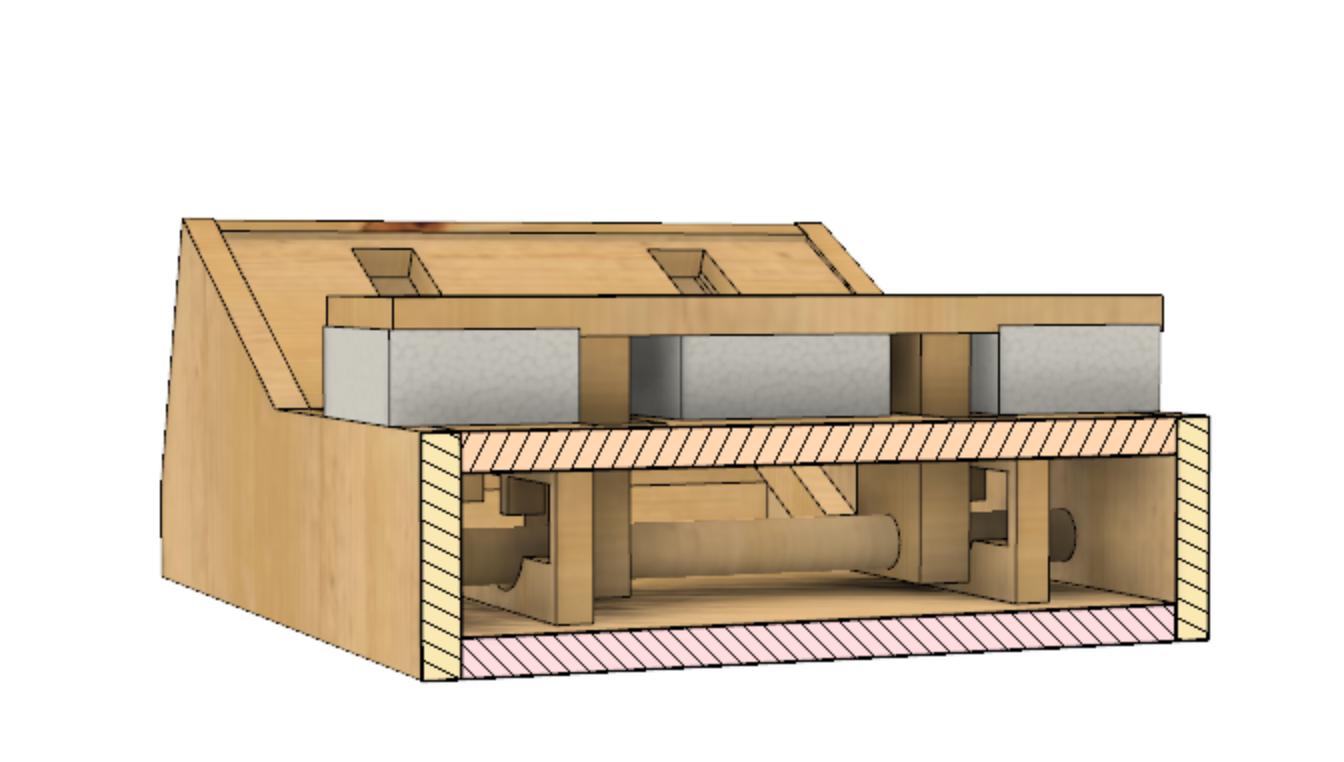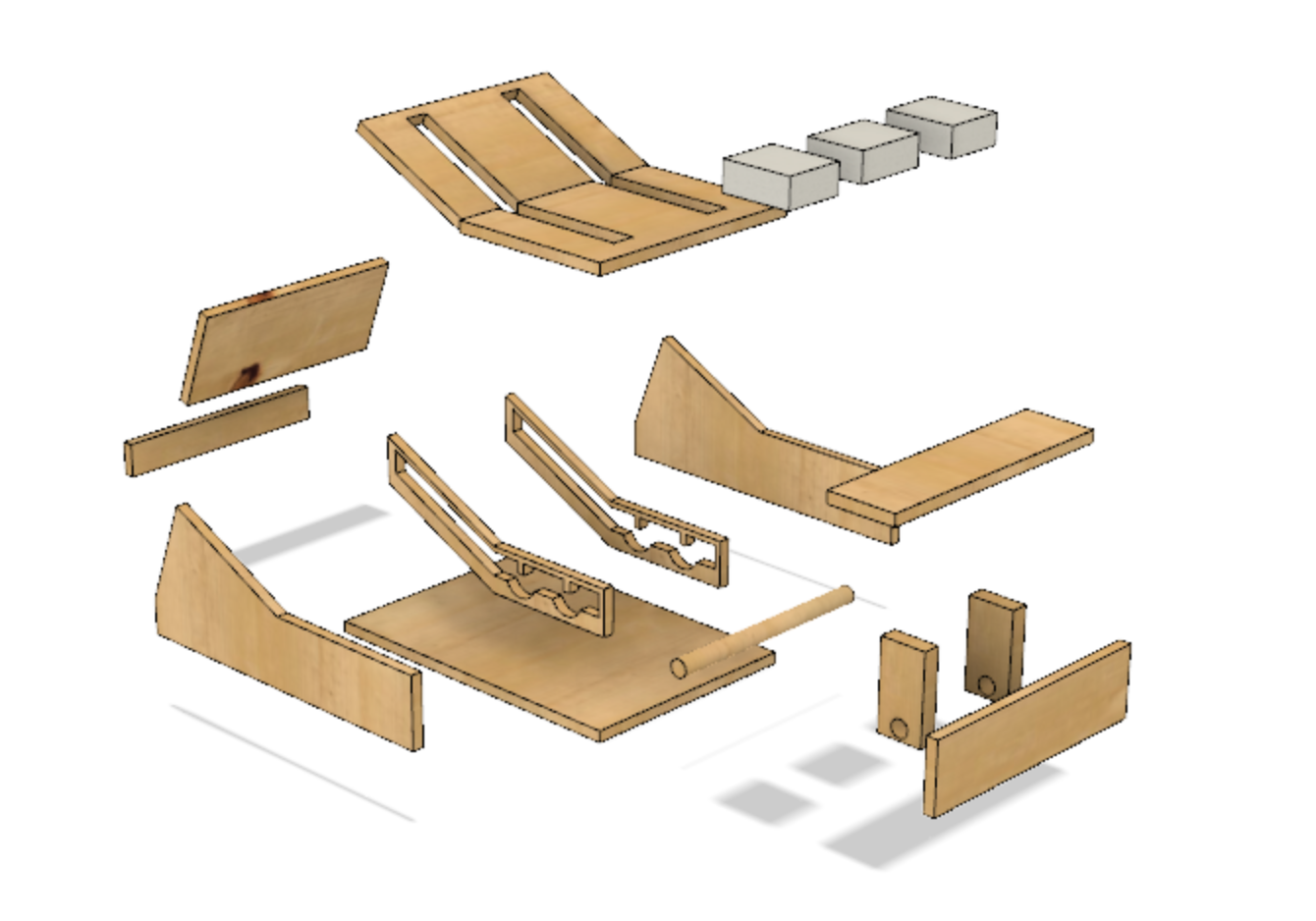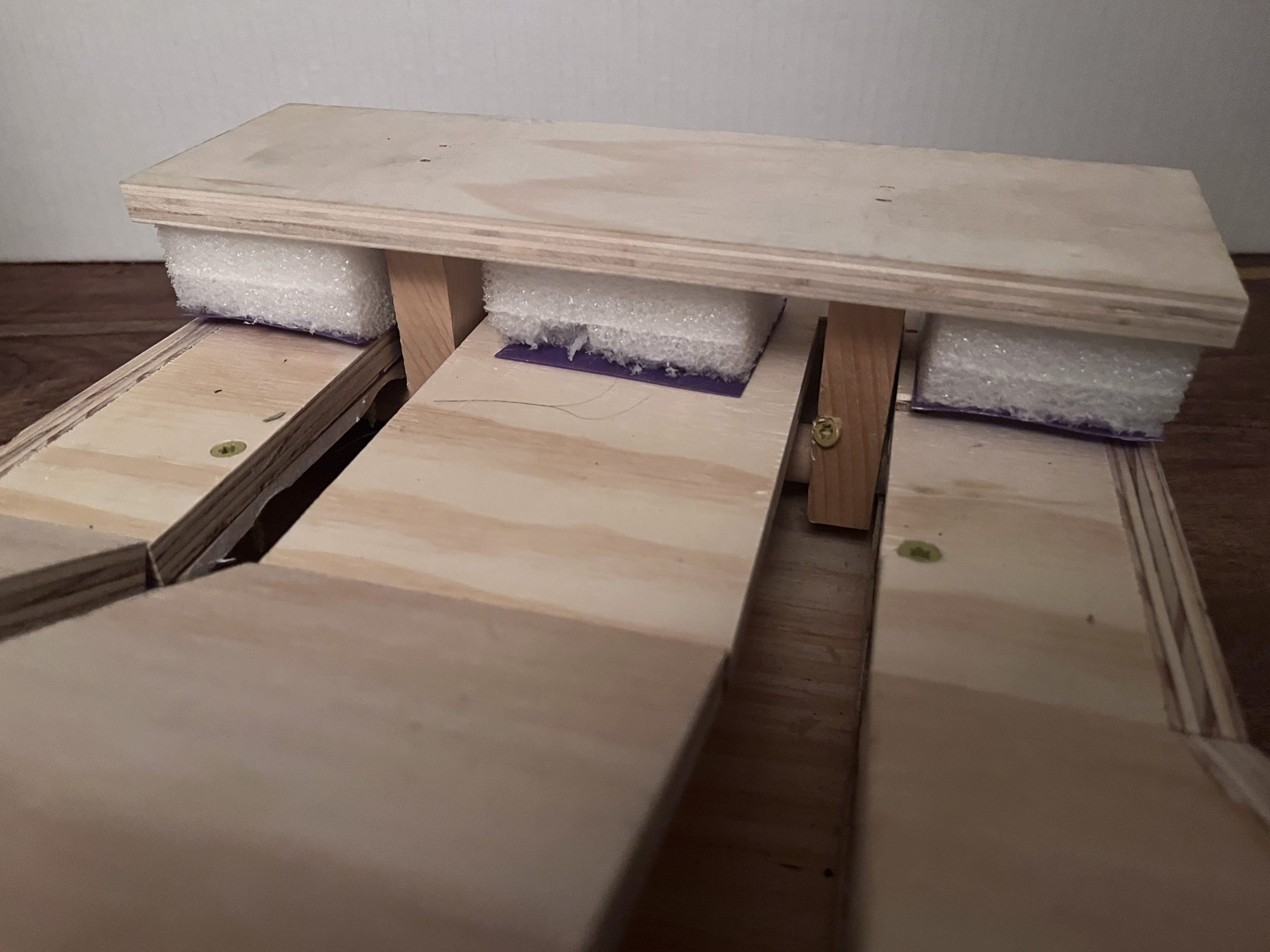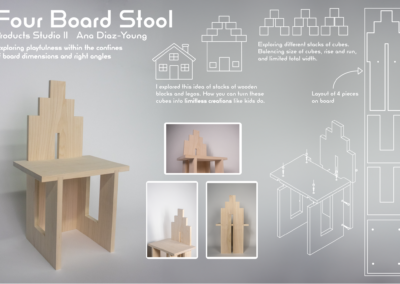Foot Fidget Tool
Fall 2021 – Spring 2022
Problem
How can a viable product be designed to help children with attention deficit hyperactivity disorder (ADHD) expend excess energy, but not disrupt the classroom?
Analysis of Current problem
Although there are many products on the market currently that advertise as fidget tools, in reality they are toys that end up capturing too much of the attention of students. There was a need for fidget tools that allow for non-distracting movement. Additionally, a product was needed that did not hinder students’ ability to participate effectively in the classroom setting.
Research
To gain more insight into the issue, I interviewed multiple learning specialists who are experts in the field. Additionally, I analyzed current products on the market. Based on this research, I developed a list of specifications to guide my design.



Development
Through a process of sketching and making mockups each concept was evaluated based on the specifications. In the end what was know as the skeeball was chosen. Developed 3D model on Fusion 360 to create build plans.



Finished Product
Using the working drawings from the 3D model, I manufactured the final model using a chop saw, jigsaw along with other woodshop tools.



User Testing

After manufacturing my design, I engaged in user testing with 3rd through 6th graders and with learning specialists.
Redevelopment
Through revisiting my specifications, comments from expert appraisal, and user testing, I worked on improving the design.

The revised design is to be used only by one foot to prevent it from becoming a distraction for the user. The primary goal of this fidget tool is to supply a mode to exert the excess energy of a child with ADHD allowing them to focus on the task at hand. This revised version is an improvement as all the edges are filleted to prevent injury, everything is scaled to using one foot, all internal edges have been curved to allow for smoother passage of the sliding post. Additionally, it is now only one obstacle to allow for some challenge but not require a user’s complete attention. The now one peg foot mechanism prevents the sides from becoming out of sync and alleviates some of the challenge that came with that. The smaller size also allows it to be a more discrete experience for the user.
More Projects:
adiazyou@andrew.cmu
(202) 615-2518





